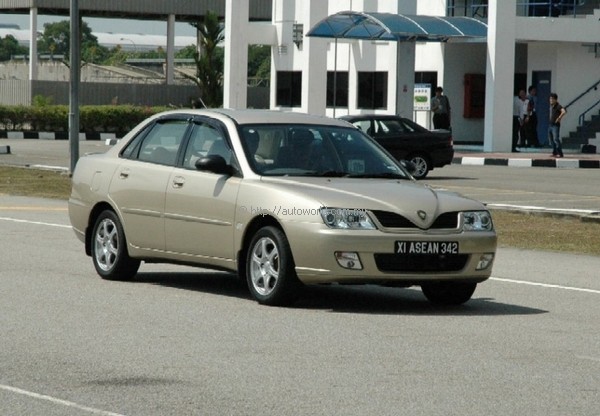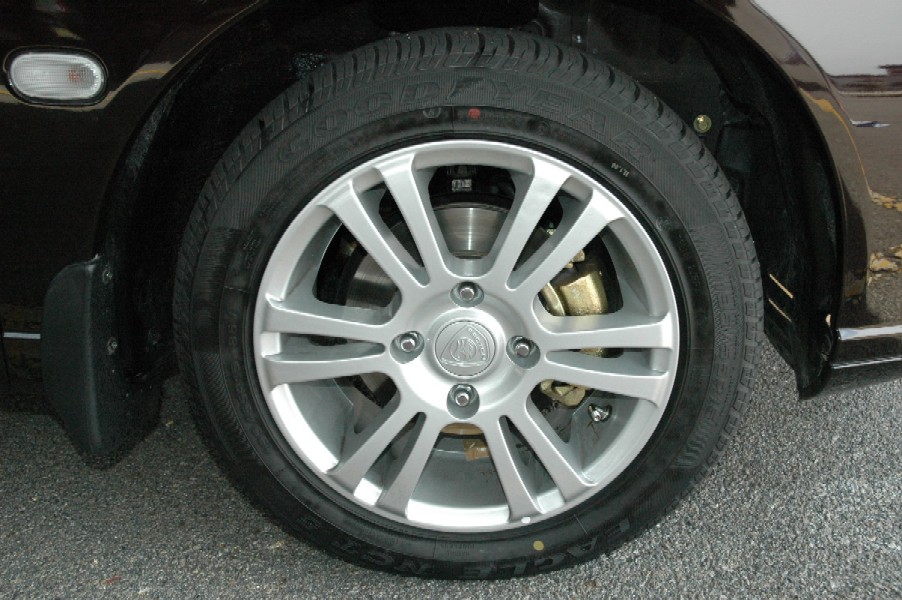Campro Engine in Waja
It was only a matter of time before this momentous step was to be taken by Proton, and finally, they have done it! Yes, they have replaced the Mitsubishi 4G18 engine in the Waja with their very own Campro engine.
The 4-cylinder SOHC (Single Overhead Camshaft) 4G18 Mitsubishi engine has been replaced by the DOHC (Double Overhead Camshaft) Campro. The Campro is the first in-house developed engine by Proton, and currently powers the Gen2, but the ECU mapping has been tweaked. It is expected that the Campro will be introduced into other Proton units in the near future, principally because there will be no royalties to be paid to use engines from outside sources. This in turn translates into lower costs per unit for Proton. Hopefully the benefits of this cost saving will be passed on to Malaysian consumers.
The overall engine power remains at 110 bhp @ 6,000 rpm, and maximum torque is at 148 Nm @ 4,000 rpm, an increase of 8 PS, and 8 Nm over the outgoing Waja engine. On paper the Campro looks to be better, and indeed it is at the higher engine speeds above the 3,500 rpm mark. However, Proton admits that the lower end torque at between 2,000 rpm to around 3,300 rpm, the power of the Campro actually dips below that of the Mitsubishi 4G18, and it is only at the higher engine range that the power comes on. When asked why this is so, the reply was that this is a characteristic of the engine.
Elsewhere, there are minor changes to the specifications and features. These include a new set of alloy wheels and a Campro badge on the rear boot lid, and a new ‘Burgundy’ colour for the exterior. Inside, the interior colour is beige and brown, and the meter cluster now has a chrome surround. Our test cars had leather seats, but we cannot confirm if fabric seats are available as an option. It certainly has been quite a while since I last sat in a Waja, but I must say the general quality has improved, including the dashboard, which is now with ‘soft feel’ plastic. The air-conditioner centre vents are redesigned, and the Waja now comes with a CD-MP3 player. A spokesman for the company also mentioned that there have been several quality improvements, top of the list being the power windows, which are claimed to be a whole lot better than before. On an aside, our preview cars had no ABS and no airbags fitted; these will be introduced later.
The motoring media had a chance to try out the Campro Waja on the Proton Test Track in Shah Alam. Also available for comparison were two units of the Mitsubishi-engined Waja. We did not have all the time in the world to do extensive testing, and so my mission was to drive both the models, and determine if there was any perceptible difference; the previous Waja drives well as a car, and if the Campro is the same, it is good enough to be unleashed to the general public.
In an apple against apple comparison, the Campro Waja felt as good as the outgoing model, especially in the rpm ranges above 3500 rpm. I took great pains to put myself in the shoes of the typical Waja buyer, and drove both models many laps around the test track. Take-off is slightly less urgent in the Campro, but once it gets going above 3,300 rpm, the driving sensation is very similar. At the high end, the Campro engine feels a little more perky, a reflection of the higher engine output. Driven at our national road speed limits of 90 km/hr (trunk roads) and 110 km/hr (highways), the Campro is okay on light throttle (cruising mode); it is only when you to ease up the speed from here that you will feel a slight, almost imperceptible hesitation. Once the engine revolutions go above 3,500 rpm, the Campro becomes ‘alive’ again. In the automatic, the trick is to stomp on the accelerator a little harder, and let the system ‘kick down’ a notch and the car will respond quite well. In the manual, shifting down a gear to get the engine turning above the 3,300 rpm mark does the job.
Overall acceleration appears to be better in the Campro, with claimed zero to one hundred time of 10.8 seconds for the manual gearbox, and 13.5 seconds for the auto. Comparative figures for the previous model shows 12.0 seconds for the manual transmission model. On the move, the average driver will hardly notice the difference, especially if one drives at light throttle. Sportier types will appreciate the Campro better, since they will, in all probability, be using the higher engine rpm range. Claimed top speed for the manual Campro is 190 km/hr, a slight improvement over the previous model, while the automatic is claimed to have a top speed of 185 km/hr. Personally, I found the Campro engine in the Waja to be quite good. An extended test of the Campro engine in the Gen2 has proven that this engine is very reliable, having not failed even once, although my test team has put it through all kinds of punishment in the many months that the car was put in our charge.
In terms of overall handling, the Campro Waja is as good as ever. After all, the monococque is very much the same, and the legendary handling has not changed in any way. The Waja remains as sure-footed as ever.
The good news for everyone is, the Waja Campro manual remains at RM59, 000+, while the Automatic retails at RM61, 000+, making the Waja one of the best value for money packages around.











































